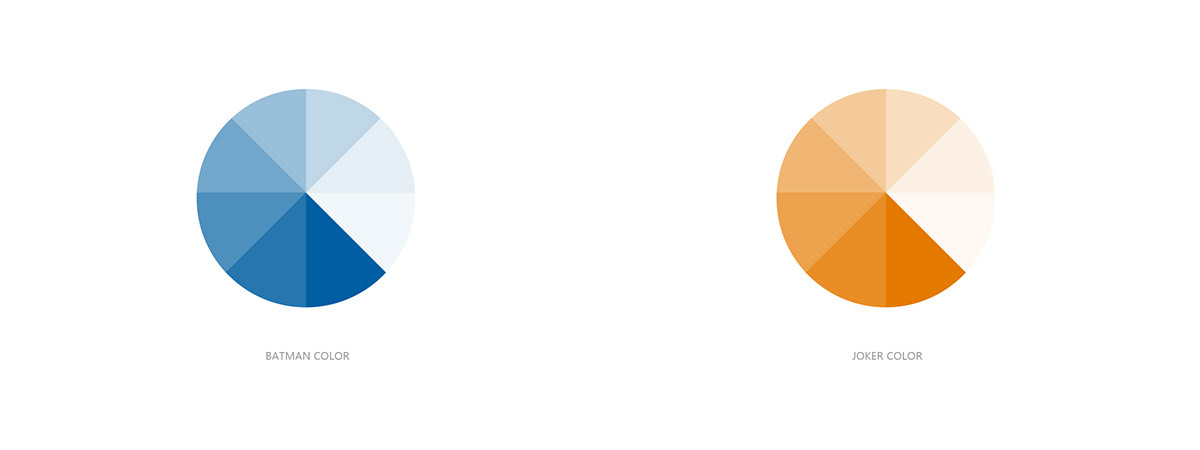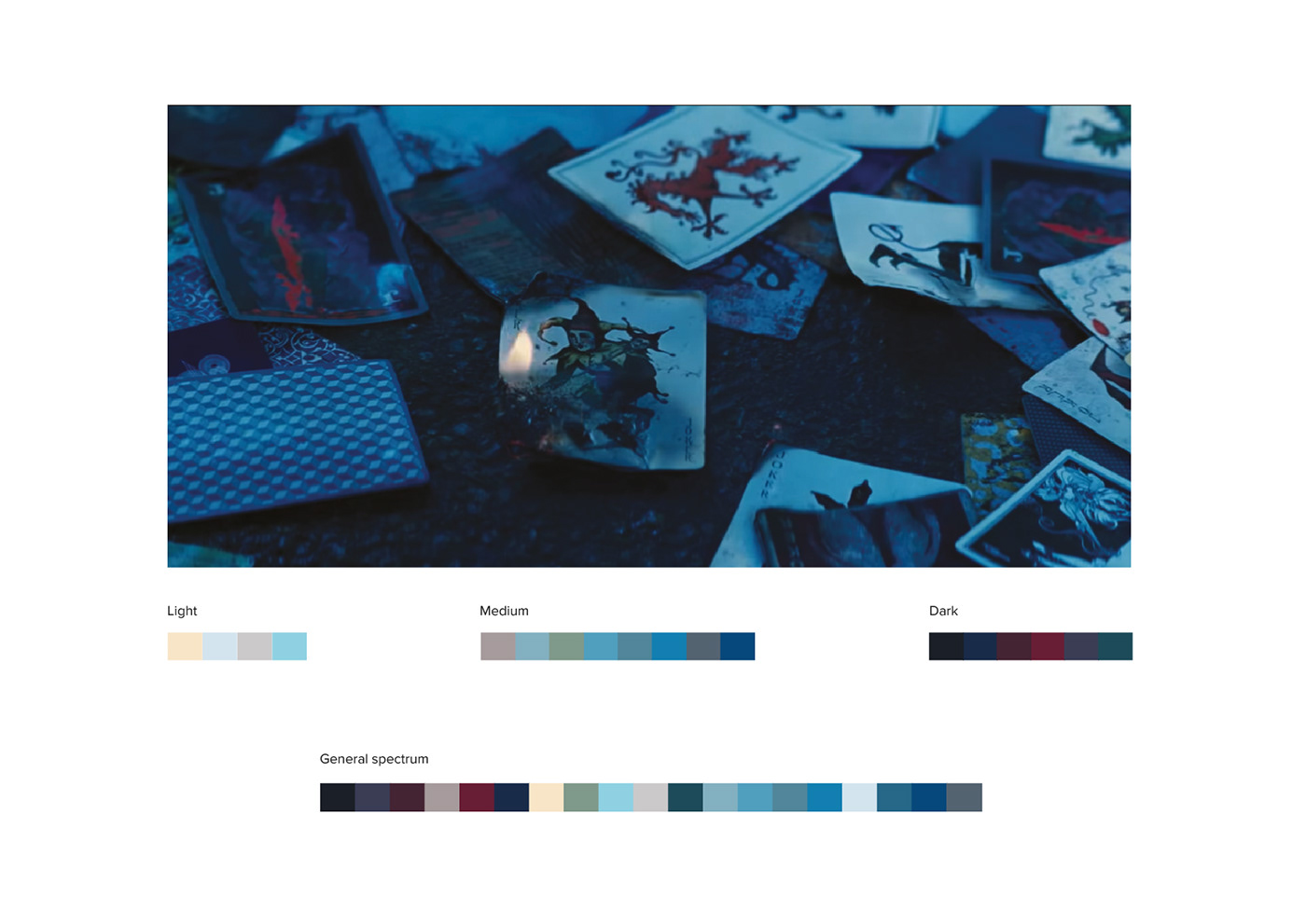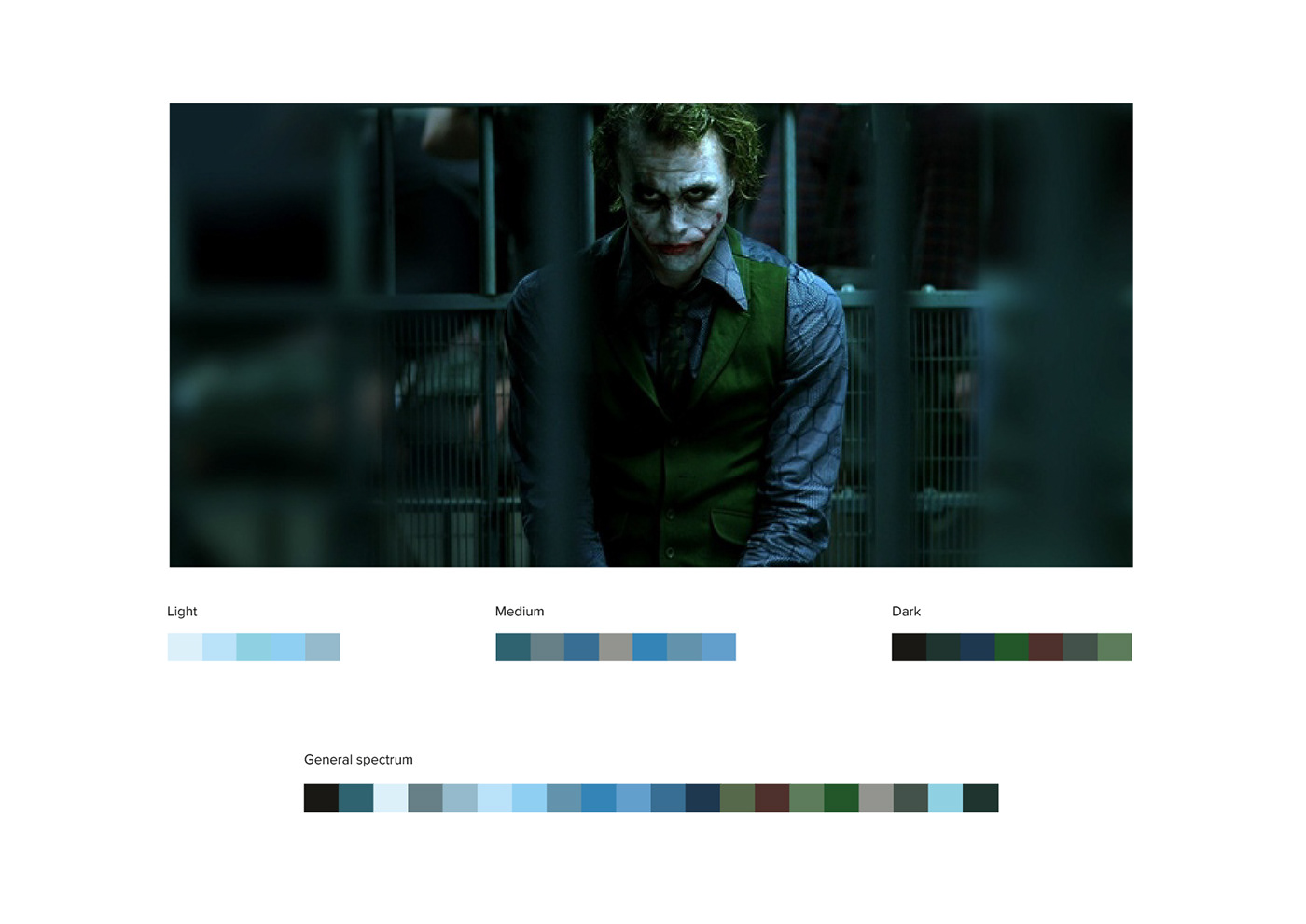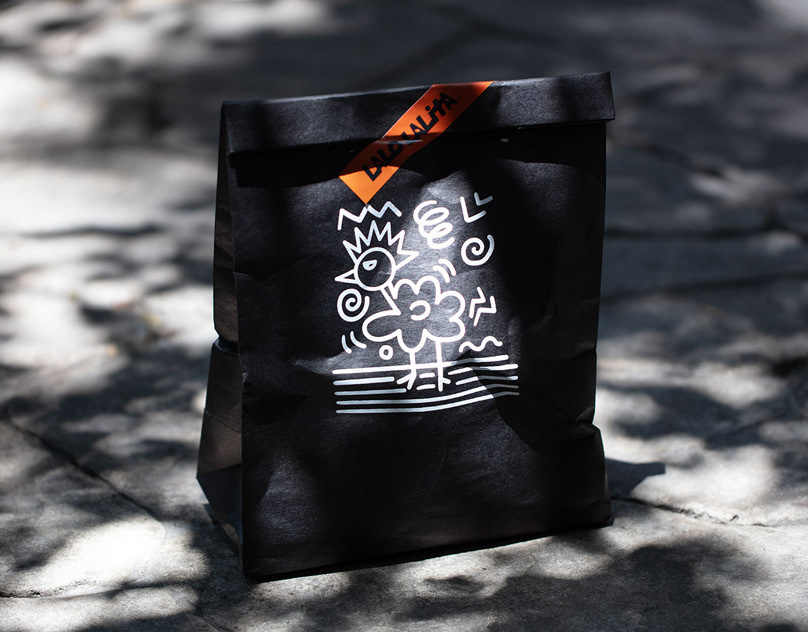

Before understanding color, we must understand a little about the film
The Dark Knight, set in Gotham, shows the rise of a new mastermind, the Joker, who comes to Gotham to create chaos but first must go through Gotham's hero, Batman.

The Joker is the perfect antagonist, as he keeps playing at Batman’s weaknesses and keeps forcing him to make tough choices throughout the film. Batman often loses to the Joker because of how smart he is and how he’s always one step ahead of Batman. There are multiple scenes where Batman feels defeated and lost.
Another reason why this movie is so iconic and interesting is that both the antagonist and the protagonist actually have the same goal, just different visions of it. Batman is fighting for hope and for law and order. And the Joker wants to upset the established order and create chaos.
COLOR ANALYSIS

In this movie, I analyzed the color palette of Batman and Joker only
We notice in these shots that the color palette of Batman is shades of blue and that the color palette of the Joker is shades of orange.

The first scene

At the beginning of the movie, there is a shot of Gotham City. In this scene, we find that the general atmosphere is calm
and the color of the colors is calm, but the shades of violet indicate mystery, which represents the calm before the storm.

In a scene when Batman is on his bike racing toward the Joker, the use of color and lighting creates fear and confusion in the minds of the audience. Batman has an easy chance to end the Joker. The tyrannical colors are orange degrees, which indicate the Joker and that the Joker has an impact on this scene.

In the above image, we can see the use of warmer colors to create an emphasis on Batman, who is looking lost and defeated.
Blue is almost always used to denote sadness, and in this particular scene, Batman loses the person he loves and, therefore, is obviously sad. And orange and yellow show distrust and caution.

This is a shot of the Joker, but his color palette is not visible, The color palette of Batman is the tyrant because this shot was in the land of Batman
The light torch in orange tones shows the trace and imprint of the Joker.
The light torch in orange tones shows the trace and imprint of the Joker.

The standoff scene The angle of the shot is mainly warm, with yellow and orange used for most of the shot. The two characters are in a darker color, black and purple, demonstrating the mystery. We see that both characters (especially Batman) are going through a conflicting journey in their heads, and thus he is confused about what to do.

Here the Joker is at his strongest; his color palette is there and supports his strength, He clearly has nothing to lose so much that he burns money to show that his goal is not money

As we said earlier, the Joker's color palette is not with him because, in Batman's Land, this is one of the most famous scenes in the movie. It's when the Joker gets caught on purpose to make Batman believe he's finally got it and that he's finally on top of the Joker. But the Joker is clever and cunning, and throughout the movie, he's always one step ahead of Batman.
The use of green, blue, and purple shades gives a cold and mysterious mood. . Green helps express ambition and greed, which are two defining traits of the Joker. The dark blue color denotes strength and shows us that the Joker, despite being in prison, is still in power. The color purple helps explain the mystery of the Joker

In the end, this film used complementary color scheme
The goal of complementary color palettes is to create a visual ‘life’ in the frame
Dueling colors are often associated with internal or external conflict. No matter the color selection, complementary colors combine warm and cool colors to produce a high-contrast, vibrant tension in the film.
THANK YOU






